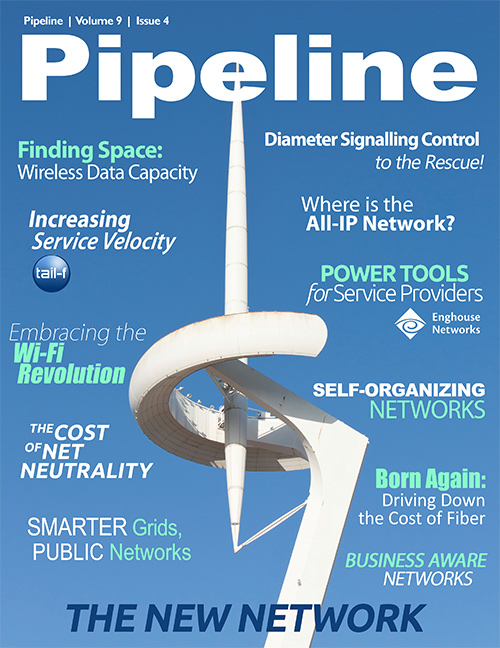Finding Space: Solutions for the Wireless Data Capacity Crunch
"We're headed toward a world of 1GB a day of data consumption per user," said Stephane Daeuble, Small Cell Global Product Marketing Manager with Nokia Siemens Networks. "In that environment, more macrosites may just mean more noise."
Indeed, some areas may need little additional infrastructure in the near future, while others may need a 10x or 20x deployment to meet rising levels of demand. To meet the needs of these hot zones, an approach that includes small cells, including both home- or business-based femtocells and larger-scale deployments, is needed.
However, the deployment of small cells creates lots of new considerations for service providers, Daeuble said. Replacing a centralized macrosite with an array of small cells means that each of those miniature cells must be independently placed, powered, and maintained. Are the cells placed on street lights, drawing power from those lights? What happens when those lights are turned off during the day? How do you keep hundreds of small cells clean and free of everyday urban grime? How do those small cells stay plugged into the central network? Fiber isn’t everywhere, even in high-density markets, so how do you bridge those gaps?
All of these considerations should be a part of the network planning and management process, Daeuble said, if a small cell strategy is to live up to its sizable promise.
Smarter cells
What’s more, the potential for even macrosites to be much smarter is still on the table. In talking with rural carriers, especially, and with vendors like CHR Solutions that deal with many rural carriers, it’s surprising how many network antennae still need someone to climb a ladder in order to be adjusted. There is a huge amount of low-hanging fruit left in implementing network elements that can be optimized from a central location, minimizing truck rolls and other associated labor costs.
Once these strategies are fully implemented, cell sites can be coordinated in a much smarter way. If a financial district goes dark at night, making many sites redundant, many can be put to sleep and those that remain can be adjusted from the NOC, or even adjust automatically, to cast a wider net and provide coverage for those still in the area. Furthermore, self-organizing networks (SON) can accomplish these and other functions, including self-configuration and self-optimization, further reducing unnecessary headcount and increasing efficiency.
Hitching a ride
Mobile backhaul is also becoming more and more prevalent in the capacity conversation. What's more, thanks to metro Ethernet, it's becoming more and more cost effective. Ovum estimates that by 2015, 88 percent of mobile backhaul will be carried over Ethernet, due in large part to its overwhelming cost efficiency over existing backhaul technology. Furthermore, additional cost savings can be seen by leasing, rather than building, backhaul networks. And this all helps the bottom line. It does, however, complicate the monitoring scenario, as visibility is limited both by new technology and non-ownership of stretches of the network. However, monitoring capabilities of several product lines of OSS software are keeping pace with these developments, though that may require additional software for CSPs. However, even with these costs, overall savings are tangible, both in terms of reduced wireless network strain and reduced backhaul roll-out costs.
Looking ahead
There are other solutions that promise to help ease data capacity needs, too. Since video, especially, is the source of much network strain, better video compression technology is being developed that could help ease some unnecessary strain. Of course, since much of this video is over-the-top, it's tough to facilitate such a push without either some measure of coopetition between CSPs and content developers or much more draconian bandwidth controls. But better policy control, all around, could be an answer unto itself. New data traffic management and policy control products and solutions are making it easier to ensure that subscribers are carrying their fair share, and that premium traffic is dealt with accordingly.
And pushing even further out, who knows what speeds and capacities may be possible. Recent lab tests utilizing “twisted light” lasers saw transmissions of up to 2.56 terabytes per second through open space. While these speeds don’t translate to what’s currently possible in earthbound wide-area wireless networks, due to terrestrial radiation interference, they may be some hint of the unbelievable speeds and capacities that may become reality sooner than we think.


















